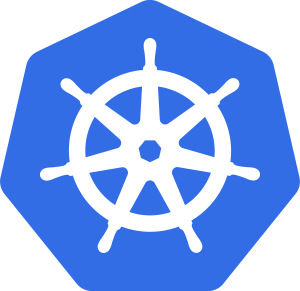
The shift toward cloud-native architecture is reshaping the way we design, deploy, and operate modern applications. In this post, we’ll walk through how to build a Go-based application, containerize it with Docker, and deploy it onto a Kubernetes cluster — all with practical tools and real-world patterns. If you’re aiming to build scalable, observable, and manageable services, this is a journey worth taking.
📑 Table of Contents
- Why Go and Kubernetes for Cloud Native Development?
- Preparing the Go Application
- Containerizing Go with Docker
- Understanding Kubernetes YAML Manifests
- Local Deployment with Minikube or Kind
- Automating Deployments with Helm
- Monitoring and Observability in Kubernetes
- Expanding to GKE, EKS, and AKS
- Sustainable Architecture in a Cloud Native Era
1. Why Go and Kubernetes for Cloud Native Development?
Monolithic applications are giving way to agile, distributed services that can evolve independently. In this paradigm shift, cloud-native technologies like Go and Kubernetes are more than just trendy tools — they are foundational components for scalable and resilient system design.
Go, with its simplicity, strong concurrency model, and fast compile times, is ideal for writing efficient microservices. Kubernetes, on the other hand, is the de facto standard for container orchestration — handling deployment, scaling, and fault tolerance with elegance.
This powerful duo has become the engine behind many hyperscale systems used by companies like Google, Dropbox, and Uber. In this guide, we’ll show how to bring a Go application to life inside a Kubernetes cluster, incorporating CI/CD principles, observability practices, and cloud deployment strategies.
If you’re building backend systems and want full control over scalability, reliability, and operational insight — this guide will walk you through a proven approach to getting there.

2. Preparing the Go Application
Go (also known as Golang) is a statically typed, compiled language that produces a single binary executable, making it naturally suited for containerized environments. Its minimal runtime dependencies, cross-compilation capabilities, and fast execution make Go a top choice for building lightweight and cloud-native applications.
In this tutorial, we’ll build a simple RESTful API with a single endpoint — /ping — to demonstrate the structure and behavior of a Go service that is ready for containerization and deployment on Kubernetes.
📁 Recommended Project Structure
Here is a typical folder structure for a scalable Go project:
go-k8s-app/
├── go.mod
├── go.sum
├── main.go
├── handler/
│ └── ping.go
├── config/
│ └── config.go
└── Dockerfile
The go.mod file manages module dependencies, while the handler package handles HTTP requests. This modular layout promotes testability and clean separation of concerns.
📌 Minimal REST API Example
Let’s begin by writing a basic server that listens on port 8080 and responds to GET requests to /ping:
package main
import (
"log"
"net/http"
"yourapp/handler"
)
func main() {
http.HandleFunc("/ping", handler.Ping)
log.Println("Server running on port 8080")
log.Fatal(http.ListenAndServe(":8080", nil))
}
Here’s the content of handler/ping.go:
package handler
import (
"encoding/json"
"net/http"
)
func Ping(w http.ResponseWriter, r *http.Request) {
response := map[string]string{"message": "pong"}
w.Header().Set("Content-Type", "application/json")
json.NewEncoder(w).Encode(response)
}
This setup may be basic, but it introduces a key health check endpoint that we’ll later use in Kubernetes for readiness and liveness probes.
🛠️ Installing Dependencies and Running the App
With Go’s built-in tooling, you can install dependencies and launch the app using just two commands:
go mod tidy
go run main.go
Once running, you can test the API locally by sending a request to http://localhost:8080/ping. The response will be:
{
"message": "pong"
}
Now that the API is working as expected, the next step is to containerize this application using Docker and prepare it for Kubernetes deployment.
3. Containerizing Go with Docker
Now that our Go application is working, it’s time to package it into a Docker container. Containerization enables consistent deployments across environments and is a prerequisite for running applications on Kubernetes.
Thanks to Go’s ability to produce static binaries, we can build highly efficient container images without needing a full operating system or runtime environment inside the container. To achieve this, we’ll use a multi-stage Docker build.
🧱 Writing a Multi-Stage Dockerfile
Here’s a production-grade Dockerfile optimized for Go applications:
# Build stage
FROM golang:1.20-alpine AS builder
WORKDIR /app
COPY go.mod ./
COPY go.sum ./
RUN go mod download
COPY . ./
RUN go build -o app .
# Runtime stage
FROM alpine:latest
WORKDIR /root/
COPY --from=builder /app/app .
EXPOSE 8080
CMD ["./app"]
Explanation:
- The first stage uses the official Go Alpine image to compile the binary.
- Dependencies are downloaded before copying the source code to leverage Docker’s cache.
- The final image contains only the compiled binary, drastically reducing the image size (often under 15MB).
🐳 Building and Running the Container
To build the Docker image and run the container locally, use the following commands:
docker build -t go-k8s-app .
docker run -p 8080:8080 go-k8s-app
Now you can test the running container by accessing http://localhost:8080/ping. If all goes well, you should see the expected JSON response:
{
"message": "pong"
}
This confirms that your Go application runs correctly inside a container. With this image ready, we can move on to writing Kubernetes manifests to deploy it into a cluster.
4. Understanding Kubernetes YAML Manifests
With your Go application containerized, the next step is deploying it to Kubernetes using declarative configuration files written in YAML. Kubernetes resources are managed via these manifests, which describe what your desired system state should be.

Let’s break down the essential resources you’ll need to deploy a basic web application:
| Resource | Purpose |
|---|---|
| Deployment | Defines how to run and manage one or more replicas of your app |
| Service | Exposes your app to internal or external traffic via stable networking |
| ConfigMap | Provides environment-specific config without changing code |
📄 Example: Deployment YAML
This manifest defines how to run two replicas of our Go container with resource limits and health checks:
apiVersion: apps/v1
kind: Deployment
metadata:
name: go-k8s-app
spec:
replicas: 2
selector:
matchLabels:
app: go-k8s-app
template:
metadata:
labels:
app: go-k8s-app
spec:
containers:
- name: go-app
image: go-k8s-app:latest
ports:
- containerPort: 8080
resources:
limits:
memory: "128Mi"
cpu: "500m"
requests:
memory: "64Mi"
cpu: "250m"
livenessProbe:
httpGet:
path: /ping
port: 8080
initialDelaySeconds: 5
periodSeconds: 10
Key Points:
replicasensures high availability by running multiple pods.resourcesset memory and CPU constraints to prevent resource starvation.livenessProbeautomatically restarts failing containers using our/pingendpoint.
🔌 Example: Service YAML
To make your app reachable, define a Kubernetes Service:
apiVersion: v1
kind: Service
metadata:
name: go-k8s-service
spec:
selector:
app: go-k8s-app
ports:
- protocol: TCP
port: 80
targetPort: 8080
type: NodePort
This exposes the app on a port that maps to the container’s internal port. You can also use LoadBalancer in cloud environments to assign a public IP.
🧾 Example: ConfigMap YAML
A ConfigMap helps you externalize your configuration:
apiVersion: v1
kind: ConfigMap
metadata:
name: app-config
data:
APP_MODE: "production"
LOG_LEVEL: "info"
Inside the Deployment spec, you can inject these config values via environment variables. This separation allows you to adapt to dev/staging/prod environments without changing your source code.
With these YAML files in place, you’re now ready to deploy your Go app into a Kubernetes cluster. In the next section, we’ll walk through a hands-on local deployment using Minikube or Kind.
5. Local Deployment with Minikube or Kind
Before going into a cloud environment, it’s important to validate your Kubernetes manifests and deployment flow locally. Tools like Minikube and Kind (Kubernetes IN Docker) let you spin up a Kubernetes cluster on your own machine for development and testing.
In this section, we’ll use Minikube as our local cluster solution, but the steps are nearly identical for Kind users.
🧰 Installing and Starting Minikube
If you’re on macOS, you can install Minikube using Homebrew:
brew install minikube
minikube start --driver=docker
This command initializes a Kubernetes cluster locally using Docker as the virtualization driver. Once started, you’ll be able to interact with the cluster using kubectl.
📂 Applying Your Kubernetes Manifests
To deploy your Go app into the cluster, apply your YAML files using the following commands:
kubectl apply -f configmap.yaml
kubectl apply -f deployment.yaml
kubectl apply -f service.yaml
You can confirm that your resources were created successfully by running:
kubectl get all
This will list all active pods, services, and deployments in the default namespace.
🌐 Accessing the Service
To access your NodePort service from outside the cluster, use Minikube’s built-in helper:
minikube service go-k8s-service --url
This will return a public URL (e.g. http://127.0.0.1:30080) where you can test your application endpoint, such as:
curl http://127.0.0.1:30080/ping
📋 Viewing Logs and Pod Status
To inspect the logs of your running Go app, use:
kubectl logs -f deployment/go-k8s-app
If you have multiple replicas, you may want to check individual Pod names first:
kubectl get pods
🧠 Tip: Batch Deployments
If all your manifests are organized in a folder (e.g. ./k8s/), you can apply them all at once:
kubectl apply -f ./k8s/
Once your Go app is successfully running in Minikube or Kind, you’ve validated your infrastructure and can confidently move forward with more advanced deployments — such as using Helm Charts to automate and template your deployments, which we’ll cover next.
6. Automating Deployments with Helm
Managing Kubernetes resources with raw YAML files can quickly become tedious as your project scales. Helm solves this problem by allowing you to define, install, and upgrade complex Kubernetes applications using reusable templates and configuration values.
Helm is often referred to as the “package manager for Kubernetes” — and for good reason. It brings order, reusability, and automation to otherwise complex deployment flows.

📦 What Is a Helm Chart?
A Helm Chart is a collection of files that describe a set of Kubernetes resources. Each chart can include templates for deployments, services, config maps, ingress, and more.
go-k8s-chart/
├── Chart.yaml # Chart metadata
├── values.yaml # Default configuration values
├── templates/ # YAML templates using Go templating
│ ├── deployment.yaml
│ ├── service.yaml
│ └── _helpers.tpl
You can think of values.yaml as the configuration layer, and templates/ as dynamic blueprints for Kubernetes resources.
🔧 Installing Helm and Creating a Chart
To install Helm on macOS:
brew install helm
helm create go-k8s-chart
This command scaffolds a new Helm chart with the default folder structure and example templates.
📄 Editing values.yaml
Modify values.yaml to define your image and application settings:
replicaCount: 2
image:
repository: go-k8s-app
tag: latest
pullPolicy: IfNotPresent
service:
type: NodePort
port: 80
resources:
limits:
cpu: 500m
memory: 128Mi
requests:
cpu: 250m
memory: 64Mi
These values are automatically injected into your templates using Go templating syntax (e.g., {{ .Values.image.repository }}).
🚀 Installing and Upgrading a Chart
To deploy your application using Helm:
helm install go-app ./go-k8s-chart
Need to apply changes after editing values.yaml or templates? Simply upgrade the release:
helm upgrade go-app ./go-k8s-chart
If you need to clean up the deployment completely:
helm uninstall go-app
🌍 Why Use Helm?
- Parameterization: Deploy to dev, staging, or prod using the same chart, with different
values.yamlfiles. - Version Control: Helm charts can be versioned and stored in repositories, just like code.
- GitOps Ready: Helm integrates well with GitOps tools like ArgoCD and Flux for automated CI/CD workflows.
With Helm, you not only simplify deployments but also make them repeatable, testable, and scalable. Next, we’ll look at how to monitor and observe your application in a Kubernetes cluster using Prometheus, Grafana, and Loki.
7. Monitoring and Observability in Kubernetes
In a distributed, cloud-native environment, simply deploying your app isn’t enough. You need to understand how it behaves over time, detect failures early, and react quickly. That’s where observability comes into play.
Kubernetes offers native ways to probe application health, while open-source tools like Prometheus, Grafana, and Loki help collect metrics, visualize system status, and centralize logs.
🩺 Liveness and Readiness Probes
Kubernetes uses health probes to decide when to restart or route traffic to your Pods:
- Liveness Probe: Checks whether the app is running. If it fails repeatedly, the container is restarted.
- Readiness Probe: Checks if the app is ready to receive traffic. Traffic is only routed when this probe passes.
Here’s how to add a readiness probe alongside the liveness probe we saw earlier:
readinessProbe:
httpGet:
path: /ping
port: 8080
initialDelaySeconds: 2
periodSeconds: 5
This makes sure the app only receives requests when it’s actually ready.
📊 Collecting Metrics with Prometheus and Grafana
Prometheus is the de facto standard for time-series metrics collection in Kubernetes. Grafana is a powerful visualization layer that connects to Prometheus and allows you to create dashboards.
You can install both using the Helm chart kube-prometheus-stack:
helm repo add prometheus-community https://prometheus-community.github.io/helm-charts
helm install k8s-monitor prometheus-community/kube-prometheus-stack
This stack sets up Prometheus, Alertmanager, Grafana, and Kubernetes metrics exporters. Once installed, port-forward Grafana to access its UI:
kubectl port-forward svc/k8s-monitor-grafana 3000:80
Visit http://localhost:3000 in your browser (default login is admin/admin). From there, you can monitor resource usage, request rates, error counts, and more.
📝 Centralizing Logs with Loki
While metrics give you the big picture, logs tell you the full story. Loki integrates seamlessly with Grafana to provide log aggregation and search.
To install Loki:
helm repo add grafana https://grafana.github.io/helm-charts
helm install loki grafana/loki-stack
Once deployed, configure Loki as a data source in Grafana. You’ll be able to query logs across all pods and namespaces using structured labels (e.g., {app="go-k8s-app"}).
📈 Building Production-Ready Dashboards
With these observability tools in place, you can:
- Track CPU and memory usage over time
- Alert when services become unhealthy or slow
- Correlate errors across metrics and logs
- Visualize traffic patterns and application dependencies
Observability isn’t just about fixing problems faster — it’s about gaining operational confidence. In the next section, we’ll look at how to extend your Go app deployment into real-world cloud platforms like GKE, EKS, and AKS.
8. Expanding to GKE, EKS, and AKS
Once you’ve validated your Go application on a local Kubernetes cluster, it’s time to deploy it in the cloud. The three leading managed Kubernetes services — Google Kubernetes Engine (GKE), Amazon Elastic Kubernetes Service (EKS), and Azure Kubernetes Service (AKS) — offer robust platforms for scaling and operating workloads in production.
☁️ Why Use Managed Kubernetes?
Managed Kubernetes services handle control plane provisioning, upgrades, auto-scaling, and high availability — allowing your team to focus on applications, not infrastructure.
🌐 Deploying to Google Kubernetes Engine (GKE)
To create a GKE cluster using gcloud:
gcloud container clusters create go-app-cluster \
--zone=us-central1-a \
--num-nodes=3 \
--enable-ip-alias
GKE integrates well with Google Cloud Monitoring, Logging, and IAM. You can use Workload Identity to bind Kubernetes service accounts to Google service accounts securely.
🛡️ Deploying to Amazon EKS
Using eksctl, you can spin up a cluster with just one command:
eksctl create cluster \
--name go-app-cluster \
--region us-west-2 \
--nodes 3
EKS tightly integrates with AWS IAM, requiring updates to the aws-auth ConfigMap for RBAC. It’s common to use ALB Ingress Controllers and External DNS for dynamic load balancing and domain mapping.
📘 Deploying to Azure Kubernetes Service (AKS)
To create a cluster on Azure:
az aks create \
--resource-group myResourceGroup \
--name go-app-cluster \
--node-count 3 \
--generate-ssh-keys \
--enable-addons monitoring
AKS is tightly coupled with Azure Active Directory and offers native support for Log Analytics and monitoring dashboards via Azure Monitor.
📌 Considerations When Moving to the Cloud
| Aspect | Notes |
|---|---|
| Authentication | Integrate with IAM/RBAC, configure service accounts carefully |
| Node Pools | Use autoscaling and spot nodes for cost optimization |
| Networking | Plan for VPCs, IP ranges, load balancers, and ingress controllers |
| Monitoring | Ensure integration with platform-native observability tools |
Each cloud platform has its own best practices, security mechanisms, and pricing models. It’s critical to plan ahead — particularly around identity, networking, and automation — when moving workloads into production cloud environments.
Next, we’ll wrap up with key takeaways and advice for building sustainable, scalable, and maintainable cloud-native architectures.
9. Sustainable Architecture in a Cloud Native Era
Cloud-native development is not just about adopting Kubernetes or writing microservices in Go — it’s about creating software that is designed for change, built to scale, and easy to operate.
In this journey, we explored how to:
- Design and structure a Go-based REST API
- Containerize it using Docker with multi-stage builds
- Deploy it to Kubernetes with YAML and Helm Charts
- Monitor it using Prometheus, Grafana, and Loki
- Scale it to production on GKE, EKS, or AKS
We’ve seen how each component — from health checks to observability dashboards — contributes to a system that is reliable, maintainable, and future-proof.
🧭 Key Takeaways
- Start simple, scale deliberately: Build small, reliable units before moving to complex multi-service systems.
- Infrastructure as Code is not optional: Helm, kubectl, and GitOps should be part of every deployment strategy.
- Visibility is power: Invest in metrics, logs, and alerts — they’re your best allies in production.
- Stay modular: Keep configurations, deployments, and infrastructure composable and version-controlled.
The tools may evolve — Go may get new competitors, Kubernetes may gain new abstractions — but the principles of sustainable architecture remain constant: clarity, automation, observability, and adaptability.
This is more than just deploying an app — it’s the foundation of a resilient, modern engineering culture.
